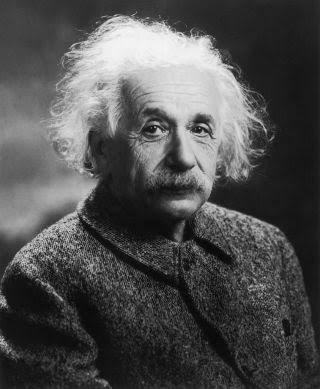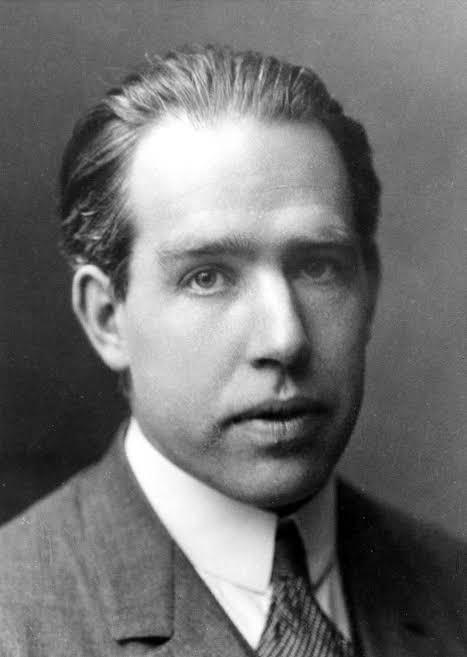Why The World’s Best Mathematicians Are Hoarding Chalk
Why the World’s Best Mathematicians Are Hoarding Chalk
"I calculated how many boxes I would need to last ten years."
#youwould
More Posts from Astrorelations and Others

hmmm
Albert Einstein:
“God does not play a dice with the universe.”
Niels Bohr:
“Stop telling God what to do with his dice.”
Stephen hawking:
“Not only does God play dice but...he sometimes throws them where they cannot be seen.”





Titan Moon of Saturn
Image credit: NASA/JPL (precessed by Stuart Rankin and Mike Malaska)
How many people can say they have played rugby with a Beluga whale? 🐳 🏉
Beautiful proofs (#4) - When Gauss was a young child...
The legend goes something like this:
Gauss’s teacher wanted to occupy his students by making them add large sets of numbers and told everyone in class to find the sum of 1+2+3+ …. + 100.
And Gauss, who was a young child (age ~ 10) quickly found the sum by just pairing up numbers:

Using this ingenious method used by Gauss allows us to write a generic formula for the sum of first n positive integers as follows:

Basic Math in Japanese

あけましておめでとうございます
I’m sorry for the lack of posts recently, I promise I didn’t forget about this blog.
I hope you all find this useful. I formatted the post this way so you can see the phonetic guide. Let me know if it is hard to read; I can upload it again without the guide.
the most beautiful words in the english language
ineffable — indescribable, unspeakable
eudaemonia — the state of consummate happiness
sumptuous — extremely costly, luxurious, magnificent
nadir — the lowest point (of something abstract)
lassitude —tiredness, lack of energy
scintilla — a spark or a trace of something
aurora — the dawn
quintessential — perfectly typical or representative of a particular kind of person or thing
renaissance — revival
bodacious — remarkable, admirable
ebullience — the quality of excitement and enthusiasm



If unit vectors always scared you for some reason, this neat little trick from The story of i by Paul Nahin involving complex numbers is bound to be a solace.
It allows you find the tangential and radial components of acceleration through simple differentiation. How about that!
Have a good one!
** r = r(t), θ = θ(t)
What is a Wormhole?
Wormholes were first theorized in 1916, though that wasn’t what they were called at the time. While reviewing another physicist’s solution to the equations in Albert Einstein’s theory of general relativity, Austrian physicist Ludwig Flamm realized another solution was possible. He described a “white hole,” a theoretical time reversal of a black hole. Entrances to both black and white holes could be connected by a space-time conduit.

In 1935, Einstein and physicist Nathan Rosen used the theory of general relativity to elaborate on the idea, proposing the existence of “bridges” through space-time. These bridges connect two different points in space-time, theoretically creating a shortcut that could reduce travel time and distance. The shortcuts came to be called Einstein-Rosen bridges, or wormholes.

Certain solutions of general relativity allow for the existence of wormholes where the mouth of each is a black hole. However, a naturally occurring black hole, formed by the collapse of a dying star, does not by itself create a wormhole.
Wormholes are consistent with the general theory of relativity, but whether wormholes actually exist remains to be seen.

A wormhole could connect extremely long distances such as a billion light years or more, short distances such as a few meters, different universes, or different points in time
For a simplified notion of a wormhole, space can be visualized as a two-dimensional (2D) surface. In this case, a wormhole would appear as a hole in that surface, lead into a 3D tube (the inside surface of a cylinder), then re-emerge at another location on the 2D surface with a hole similar to the entrance. An actual wormhole would be analogous to this, but with the spatial dimensions raised by one. For example, instead of circular holes on a 2D plane, the entry and exit points could be visualized as spheres in 3D space.

Science fiction is filled with tales of traveling through wormholes. But the reality of such travel is more complicated, and not just because we’ve yet to spot one.

The first problem is size. Primordial wormholes are predicted to exist on microscopic levels, about 10–33 centimeters. However, as the universe expands, it is possible that some may have been stretched to larger sizes.
Another problem comes from stability. The predicted Einstein-Rosen wormholes would be useless for travel because they collapse quickly.

“You would need some very exotic type of matter in order to stabilize a wormhole,” said Hsu, “and it’s not clear whether such matter exists in the universe.”
But more recent research found that a wormhole containing “exotic” matter could stay open and unchanging for longer periods of time.

Exotic matter, which should not be confused with dark matter or antimatter, contains negative energy density and a large negative pressure. Such matter has only been seen in the behavior of certain vacuum states as part of quantum field theory.
If a wormhole contained sufficient exotic matter, whether naturally occurring or artificially added, it could theoretically be used as a method of sending information or travelers through space. Unfortunately, human journeys through the space tunnels may be challenging.

Wormholes may not only connect two separate regions within the universe, they could also connect two different universes. Similarly, some scientists have conjectured that if one mouth of a wormhole is moved in a specific manner, it could allow for time travel.

Although adding exotic matter to a wormhole might stabilize it to the point that human passengers could travel safely through it, there is still the possibility that the addition of “regular” matter would be sufficient to destabilize the portal.
Today’s technology is insufficient to enlarge or stabilize wormholes, even if they could be found. However, scientists continue to explore the concept as a method of space travel with the hope that technology will eventually be able to utilize them.
source
source
images: x, x, x, x, x, x, x, x, x
-
 nobodyillah liked this · 4 years ago
nobodyillah liked this · 4 years ago -
 astrorelations reblogged this · 4 years ago
astrorelations reblogged this · 4 years ago -
 alchemisoul reblogged this · 4 years ago
alchemisoul reblogged this · 4 years ago
